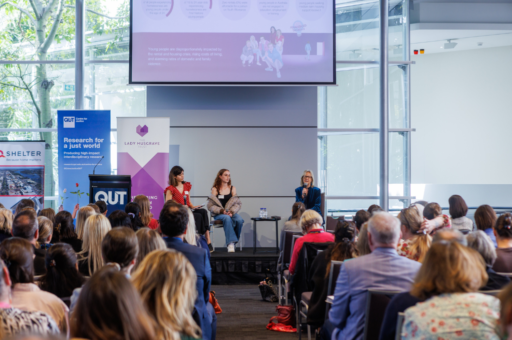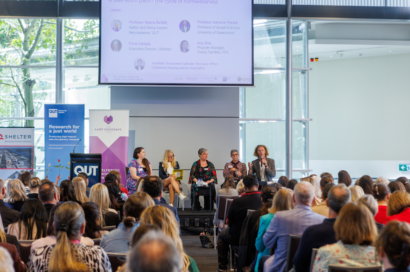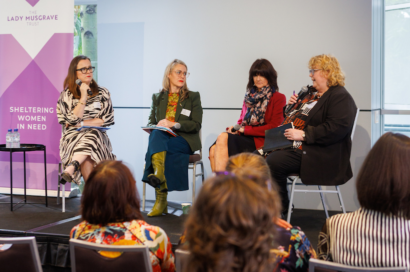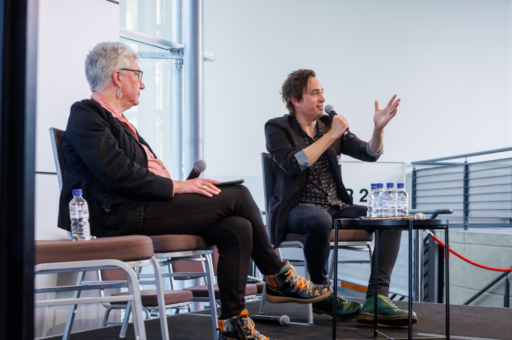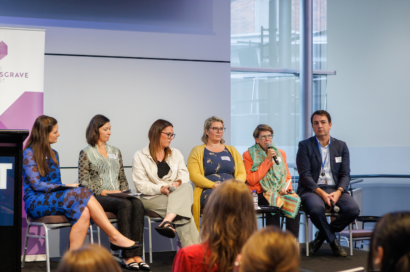
From crisis to opportunity: Rethinking Queensland’s approach to homelessness
Sep 02, 2024
Queensland is in the midst of a housing crisis, but what happens when we do things differently? At this year’s Annual Forum on Women and Homelessness, leaders from across the sector said it’s not just about building houses – it's about support, collaboration, and thinking outside the box.
With rates of homelessness in Queensland up 22 per cent, almost three times the national average, the focus of The Lady Musgrave Trust’s Annual Forum on Women and Homelessness for 2024 was clear – what can we do to ensure every woman has a safe place to live, and what can be done to ensure we don’t face a crisis like this again?
The most anticipated panel of this year’s Forum, ‘Doing things differently to get a better outcome’, brought together experienced leaders from across the housing sector to help outline the right path – or paths – forward.
Presented by the Queensland Government’s Department of Housing, Local Government, Planning and Public Works, the panel offered a robust conversation focused on forward-thinking, practical and effective solutions.
Supporting cast
Sam Betros, General Manager, Housing Development at the Department of Housing, Local Government, Planning and Public Works, explained that addressing the housing challenges isn’t just about housing supply – it’s also about housing support.
“It’s not just about building boxes,” he said. “Obviously part of the core business will always be [supply], but it’s also about identifying the right types of investment. The Homes for Queenslanders plan will deliver 53,500 social homes by 2046 – but we need those 53,500 homes to be as impactful as they can be.”
Sam cited the Queensland Government’s $2 billion Housing Investment Fund, which provides subsidies and one-off capital grants to support the commencement of social and affordable homes, as an example of the Department’s fresh approach.
“The Housing Investment Fund is a good example of us trying different things,” he said. “And I think the important thing for us is we’re not waiting for a full review or a full change in policy – we’re just working on projects that we haven’t worked on before, and learning as we go. For example, we’ve never supported a project like the Logan Housing Project through the Department before.”
The Housing Investment Fund has contributed $2.4 million towards the construction costs of four new social housing homes in Logan in partnership with The Lady Musgrave Trust. The two- and three-bedroom homes will provide safe and secure housing for young mothers and their children facing homelessness as a result of domestic and family violence.
The design of the project – which will include communal indoor and outdoor spaces where tenants can connect with each other, develop support networks and access on-site support services – has been directly informed by young Queensland mothers with lived experience of homelessness.
The project, which Queensland builder McNab has committed to building at cost, has also been supported by the donation of a large block of land; more than $1.3 billion of pro bono project management and consultant hours; pro bono legal assistance and advice; and a $500,000 donation from the Property Industry Foundation Queensland.
Clearly, it’s the result of collaboration from across the community, and that collaboration will continue after construction of the project is completed by December 2024. Churches of Christ Housing Services Limited, a community housing provider, will manage the homes once completed, and the homes will be occupied by families connected with local community services, particularly Logan-based YFS (Youth and Family Service).
Judith Hunter – the former Strategic Development Manager at YFS, who is now with 99Consulting and serves as a Board Director of The Lady Musgrave Trust – told the panel the Logan Housing Project is emblematic of the flexible, collaborative approach that will be required for the sector to navigate the housing crisis.
“[The Lady Musgrave Trust CEO] Victoria Parker talks about people bending themselves to make things work,” she said. “And that’s really evident in the Logan Housing Project.
“It really started with a casual conversation I had with Victoria when I was at YFS. We talked about how the lack of housing in Logan was getting in the way of the progress that young mothers were able to make. Victoria took that on and has come up with this amazing solution, bringing together a group of non-traditional players in the housing sector to create a fantastic opportunity in Logan.
“Without the Housing Investment Fund, this project wouldn’t be possible. But Victoria’s also brought architects and project managers and builders on board, and brought together services like YFS and Churches of Christ that were already active in the community. It’s that collaborative effort, building on the capital funding from the Department of Housing, that’s made it possible for this project to aspire to a higher level – going beyond just helping women and their children to survive, and actually helping them to thrive.”

Building bridges
The four homes in Logan are among several projects being funded through the Housing Investment Fund, which will support the commencement of 5,600 social and affordable homes by 30 June 2027.
“Instead of talking through the long list of things we’re doing, I think the more interesting thing is how we’re doing it,” Sam Betros told the panel. “Over the last year, in particular, my observation has been that we’ve been far more consultative with the sector. We’re seeking their views on what we should be developing, where we should be developing it and how we should be developing it.
“Hopefully what that means is when we deliver these projects, we’re not just delivering a certain number of homes – we’re delivering them in a way that meets the needs of the community, and meets the needs of the support services that will be working with tenants. That’s what excites me about what we’re doing now.”
In July, the Queensland Government announced the Housing Investment Fund would assist the Brisbane Housing Company (BHC) to deliver its first project on the Gold Coast – more than 150 social and affordable homes to be built at Nerang Street, Southport.
Megan Bonetti, Senior Community Development Manager at BHC, was also on the panel, and agreed that collaboration is essential for empowering individuals and communities to thrive. She cited BHC’s Home & Health program, which enables a mobile health clinic to be provided at housing sites, as an example of cross-sector collaboration in action.
The Home & Health program is supported by a grant from Brisbane City Council’s Pathways out of Homelessness Grant Program, and delivered in partnership with community housing developer Bric Housing and professional outreach medical services provider OneBridge.
“Partnerships are so important,” Megan said. “I saw this grant opportunity come through, and I knew from speaking with our asset managers that health and wellbeing was a gap for our people… so I just started cold calling people and I said, ‘Look, I think we need to start doing some place-based healthcare in our properties. Would you be willing to partner with me?’
“Thankfully we were successful, and we started the Home and Health program in partnership with Bric Housing and OneBridge last September. It’s been quite an impactful thing to be able to support our residents with basic health equity, because the health and mental health spaces can be quite complex and difficult for our residents to navigate.
“Our residents have often lived through years of institutionalisation. Hospitals are scary for them. They’re not ones to seek help, and they often don’t know how to seek help, because it’s not something that’s been modelled to them when they were young. So they’ve often just lived with their ailments and ‘gotten by’, not knowing how to dress a wound appropriately or check for skin cancers or talk about their mental health.
“To be able to bring friendly health professionals into our community spaces has been life-changing for many of our residents.”
Right here, right now
While the projects supported by the Housing Investment Fund will have a huge role to play in preventing another housing crisis in the future, Sam Betros acknowledged that they won’t solve the problem overnight.
“From a capital delivery perspective, depending on the type of project, you’re realistically looking at about three years from project ideation to the doors opening,” he said. “You have to acquire the site, work out how you’re going to fund it, design it, get planning approvals, build it and open it. It’s a cycle, and it’s impossible to shortcut. We can do better, but it’ll never be a switch that we can flick overnight.
“What we’re hoping to see is that the pipeline will grow, and the overall capacity of the system will grow. So I’m not going to sit here today and say you’re going to see all of these new social housing projects opening this time next year, but what I hope you will see is a pipeline that shows with certainty that these projects are coming in greater numbers.”
So, what happens in the meantime? While the ‘perfect’ solutions for the Queensland housing market’s perfect storm are being developed, Dr Lyndall Bryant – a senior lecturer and researcher at the QUT Faculty of Business and Law, specialising in Property Economics – encouraged attendees at the Forum to be open to stopgap solutions.
“Think about spare bedrooms,” she said. “This might not be an instant solution for homelessness, necessarily, but it should be part of the solution. Some of these new developments are years away, and in the meantime, we have 13 million spare bedrooms in Australia. Why aren’t people renting them out?
“Most homeowners in Australia are over 65, and a large proportion of those people are either living on their own, or with one other person. So why aren’t they embracing the age-old tradition of taking in a lodger? This is something that was a very normal and congenial thing that was done in our communities for centuries, and it’s not happening anymore.
“So I’m hoping my research will get to the bottom of why that’s not happening. So far, I think it’s because of the fear that if they take in a lodger, they’ll lose their pension, or there’ll be a capital gains tax liability, which are both myths under the current laws.
“There’s an education exercise there, where we need to let people know that if they want to help people in need of housing, they can help, and they won’t be putting their own financial circumstances at risk. They’d actually be improving their circumstances, because now they’d have an extra person around to pay rent and help out with the bills.
“That’s something we can do right now. We don’t have to wait years for these rooms. This is existing supply, and I think that’s an exciting opportunity.”
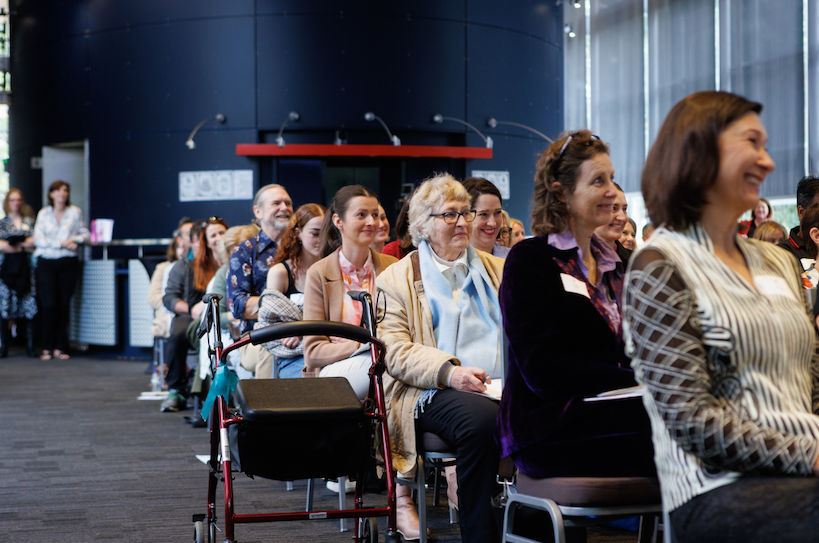
Housing solutions for all
Finally, Michelle Debert – Manager at Hart 4000, and a social worker with lived experience of homelessness – reminded everyone in attendance that solving the problem of homelessness isn’t just about finding homes for “perfect” tenants.
“As more accommodation options come online over the next few years, we need to make sure that we aren’t excluding the ‘scallywags’,” she said. “We often label the people who have unmet needs as ‘complex’. But people aren’t complex. Our systems are too complex, and the more complex they are, the more people we’re going to have with unmet needs.
“We’re trying to put people through a staircase model at the moment – a process where people go through multiple instances of crisis accommodation, and then into hotels, and we hope they somehow stabilise and become the perfect tenant so they can be approved for long-term housing.
“It’s about support, and everyone needs support. Remember, we’re not solving ‘houselessness’, we’re solving homelessness. And when people have a home, that’s when they have somewhere to live, someone to love and something to do.
“I think the best way for us to move forward is for the people who have that lived experience of homelessness, and who know what it’s really like, to continue putting their ideas forward – because even when those ideas are really simple, it’s sometimes the simple ideas that really work.”

